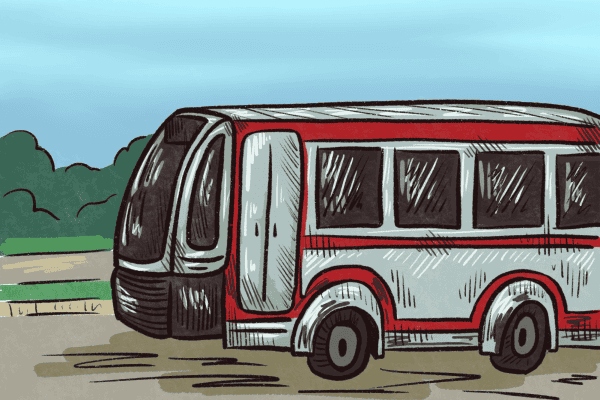Opinion | College students play an important role in ending fast fashion
September 29, 2021
Sustainability is not a priority for most college students, or other members of Generation Z. And that’s valid, seeing as shopping sustainably is not the most convenient thing. Between classes, work and maintaining their social lives, college students have a lot to navigate. Even in the midst of their busy lives, college students can make an impact on the environment.
Sustainable fashion refers to garments that are produced or accessed in an ecologically and socially responsible manner. By making sustainable shopping decisions, consumers can mitigate the harmful effects of the fashion industry on the environment, as well as the dangerous labor conditions it promotes. Sustainable shopping practices can take a number of forms, from donating old clothes, to buying less clothing or buying second hand.
Sustainable fashion is also referred to as slow fashion, serving as a direct reaction to fast fashion, an alarming trend in recent decades.
Fast fashion is “an approach to the creation and marketing of clothing that emphasizes making fashion trends quickly and cheaply available to consumers.” The trend has only worsened with social media, where clothing items are considered cute one day and hideous the next.
According to the UN Environment Programme, the fashion industry is responsible for 2-8% of global carbon emissions and is the second largest cause of water waste, which is more than all international flights and maritime shipping combined.
Fast fashion doesn’t just harm the environment. According to Ecothes, a sustainable fashion website, 93% of fast fashion brands do not pay their workers a living wage.
These statistics are definitely a cause for concern for any college student. Thankfully, it is evident that a growing percentage of college students are now entertaining the idea of shopping sustainably. Some are even doing it by accident.
With thrift shopping, vintage markets and individual reselling platforms gaining more popularity, younger generations are making an effort to shop sustainably. If sustainability can be achieved by accident, imagine the impact that we as college students could have if we shopped with intention.
Social media has had an impact in convincing teenagers and college students to shop sustainably. One notable example of an unintentionally sustainable fashion influencer is Emma Chamberlain. The YouTuber-turned-A-list celebrity opened up the avenue of thrift and vintage shopping on the internet for millions of teenagers.
Chamberlain had a major impact on me. I started shopping second hand in September 2020. Depop is a helpful resource that has surfaced in the past few years. This is a great place for people to sell and shop secondhand or handmade items. I discovered Depop when I was a senior in high school, but it took me almost 8 months to work up the courage to order anything. When I finally did, I was not disappointed. My first Depop purchase was a pair of vintage Wrangler jeans. These beauties were less than half the price of a pair of Levi’s, and they are secondhand, so they’re not only fashionable; they’re sustainable.
I delved further into my research on sustainable fashion when I wrote an article about Depop for Alice, a women’s lifestyle magazine on campus. I had just made my first Depop purchase and was obsessed with the app. I learned how accessible sustainable fashion is to college students.
What’s even more promising is that secondhand shopping revenue actually increased during the COVID-19 pandemic’s quarantine period. According to thredUP’s 2021 Resale Report, 33 million people bought second-hand for the first time during quarantine.
“We are in the early stages of a radical transformation in retail. Consumers are prioritizing sustainability; retailers are starting to embrace resale,” said James Reinhart, thredUP’s co-founder and CEO. “Pollutive industries have the power to transform when technological innovation collides with the motivations of consumers, businesses and government. We’ve seen it with electric cars, solar energy and next, circular fashion.”
Slowly but surely, shopping second hand is becoming more accessible and appealing to consumers. The preconceived notion about sustainable fashion is that it’s expensive and not trendy. The sustainable fashion industry is ridding itself of this idea through its best spokespeople: Gen Z.
According to the same resale report done by thredUP, the resale market is projected to be valued at $77 billion in five years as compared to the $36 billion it’s valued at today. It reported that thrifting and secondhand shopping are both “championed” by Gen Z, who are “a generation that has made its mark for prioritizing diversity, sustainability, and more conscientious shopping.”
As young people, college students around the world are actively changing the way we view consumerism. We have the obligation to set this standard for future generations, prizing both fashion and sustainability in equal measure.
Anyone can convert themselves and become a consumer of the sustainable fashion industry, and now is the time to start. Tuscaloosa is a great place to shop sustainably. The city boasts local thrift stores like America’s Thrift Store, Plato’s Closet and the Druid City Vintage Vendor Market. The options are out there; now it’s up to us to pursue them.
When college students shop sustainably, they save money, help the environment and create unique wardrobes. It may appear daunting at first, but the practice of sustainability is an accessible habit that only takes a little bit of practice. As busy college students, we may not be environmentally conscious all the time, but we should always try to be aware of our impact.










